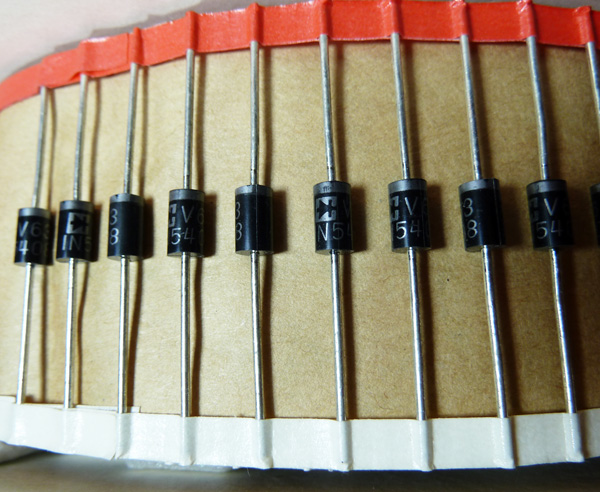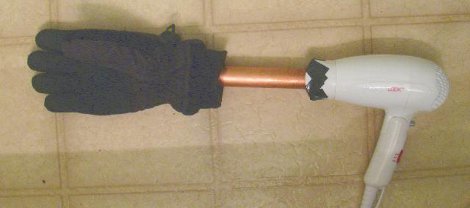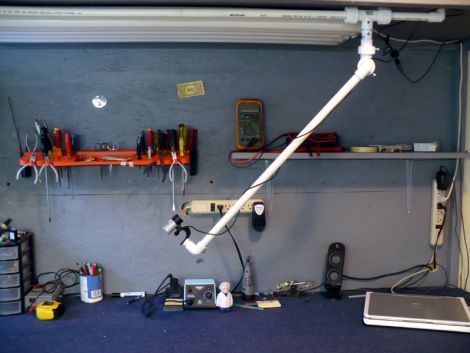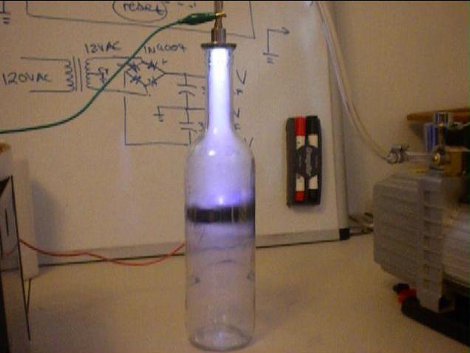The big news circulating this morning is of the Leap Motion sensor that will be hitting the market soon. They claim that their sensor is ~100 more accurate than anything else on the market right now. Check out the video to see what they mean (there’s another at the link). This is pretty impressive. You can see the accuracy as they use a stylus to write things. If you’ve played with the Kinect, you know that it is nowhere near this tight. Of course, the Kinect is scanning a massive space compared to the work area that this new sensor works in. The response time looks very impressive as well, motions seem to be perfectly in sync with the input. We’re excited to play with one when we get a chance.
HackIt106 Articles
A Bit More About The Diode

Last week we covered diodes, specifically thermionic and PN junction diodes. But oh, there are more; and they’re special!
Cruncher: A Robotic Toy Dinosaur Dissection
When my children got these interesting and very obnoxious toy dinosaurs last year, I could barely contain my excitement. I knew that one day, they would be on my work bench giving up their secrets. Cruncher is a fairly recent addition to the robotic animal trend that we’ve been seeing the past few years. Imbued with a personality that is a mixture of T-Rex, beagle, and loudmouth jerk, he’s every kids idea of a perfect pet.
Continue reading “Cruncher: A Robotic Toy Dinosaur Dissection”
Need A Hand Drying Those Gloves?

While being caught out in the rain skiing, [Andrew] was left with a pair of soaking wet gloves. Leaving them to air dry did little good, as after 3 days they were still wet, and blowing a fan at them did little to nothing to help the situation. Luckily [Andrew] had been thinking about ways to make a forced air glove drier for some time now using standard plumbing fittings.
A prototype was made similar to consumer models where the glove is fit over the end of a pipe, and while this worked great to dry the palms, it did not help the wet finger situation at all. In order to solve this issue a new design was whipped up featuring 4 fixed fingers and a movable thumb made out of copper pipe. A little drilling, and soldering was performed then the metal hand was then duct taped to the end of a hair drier, turning soaked gloves into perfectly dry ones in about three hours.
Workbench Overhead Camera Boom Made From PVC

It looks like [Dino] is getting settled into his new digs, and while the moving process has kept him pretty busy, he’s slowly but surely getting his workshop area set up. One thing that he really wanted from his new bench was a better way to record video, for both his Hack a Week series as well as broadcasting over Ustream.
He bought a nice little Hi-Def web cam for making videos and set out to build a camera boom for his bench. The boom is constructed mostly from PVC piping along with some other odds and ends for mounting. In the video below, he walks through the construction step by step, making it easy for anyone to follow along and build one of their own.
The boom looks like it works very well, and is a bargain at under $40. It articulates every which way giving him complete coverage of his workbench, and makes it easy to film whatever he’s working on – big or small.
Continue reading “Workbench Overhead Camera Boom Made From PVC”
QR Code Key Fob Helps Your Lost Keys Find Their Way Home

Don’t you hate that feeling, the one you get when you have just realized that you have no clue where you may have left your keys? If you are unlucky enough to have lost them in a public place, odds are they are as good as gone. Pumping Station One member [celtwolf] thought it would be great if your keys could help someone contact you instantly upon finding them, so he created a key fob that did just that.
SMS can use a similar URI scheme as the “mailto” protocol we are all familiar with, so [celtwolf] generated a URI that would send a text to his mobile phone with the message “I found your keys!”. He generated a QR code from the URI, then etched it on a piece of acrylic using a laser cutter. He filled in the recessed portions with a dark polymer clay, baked it, then coated it with a layer of nail polish for added durability.
Now, if anyone finds his keys and takes a picture of the QR code with their smartphone, he will immediately receive a text letting him know they are safe and sound. What a great idea!
DIY Electron Accelerator

Reader [Xellers] sent in his newest instructable: DIY Electron Accelerator: A Cathode Ray Tube in a Wine Bottle. While not exactly what you might think of a cathode ray tube, the basics are in place. A wine bottle is used as a vacuum chamber and a 9kv neon transformer is attached to a stopped in the top. A cathode is placed mid way, the air is sucked out with a pump, and high voltage is applied.
Naturally as more air gets pumped out the electric arc intensifies into a pretty solid plasma filling the space between the two contacts. While mixing drilled glass with a vacuum and high voltage sounds like an awesome hospital story [Xellers] does cover some safety points including the possibility of this thing putting out some nasty waves.
One thing that is not mentioned (that I saw) is this is very similar to how florescent light tubes work and without florescent material lining the chamber it will spit out quite a bit of UV light (notice germicidal UV lights are clear). So you will want to watch your eyes!
Join us after the break for a quick video.











